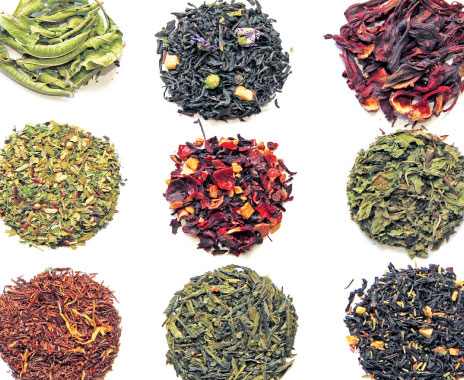There is always excitement at the beginning of a new year, with renewed hopes of health, wealth, and happiness. It’s no different in the limited-service industry, where brands are studying up on potential trends for the next 12 months to ensure a prosperous 2014.
For now, operators are feeling cautiously optimistic about the next year. The National Restaurant Association’s (NRA) most recent Restaurant Performance Index, a measure that tracks the industry’s health and outlook, was on the upswing after a late-2013 swoon.
Potentially faster economic growth this year will be a positive for restaurants, observers say, and consumers are already growing more confident thanks to an improving jobs picture.
“Economic factors are supporting stronger consumer confidence,” says Bonnie Riggs, restaurant analyst at NPD Group, a Chicago-based consulting and market research firm. “And there is a close correlation in consumer confidence and restaurant traffic.”
Dozens of forecasts have been issued over the past few months to tell the industry which consumer behaviors will stem from that newfound confidence. Most agree that these eight trends, culled from two-dozen lists created by chefs, consultants, and culinary experts, are likely to have the biggest affect on limited service this year. While some established themselves as trends years ago, the experts believe they will be even more disruptive in 2014 than ever before.
1. Ingredient transparency
People increasingly want to know about the ingredients and their origins in food. While that has been the case for a few years, 2014 should see the trend garner more mainstream attention.
“Customers are more interested in what they’re eating and where it comes from,” says Annika Stensson, the NRA’s senior manager of research communications. “They want to know it’s being grown responsibly.”
More than half of the top 10 trends in the NRA’s “What’s Hot” culinary forecast, as determined by a poll of chefs, revolve around the origins of food, including the top two: locally sourced meats and seafood and locally grown produce. Other trends in the foecast involve sustainability and farm-branded items.
“Making it real is very important,” says Mary Chapman, director of product innovation for Chicago-based market research firm Technomic Inc. “This comprises a whole lot of issues, but consumers are increasingly focusing on them.”
Chipotle may be the model for discussing the provenance of its ingredients and providing local produce when possible, but there are many others taking similar steps. The menu at Rick Bayless’s fast-casual Tortas Frontera units in Chicago lists the origins of ingredients, while many major brands are boasting about sourcing practices in limited-time offers; Wisconsin-based quick serve Culver’s, for example, boasted to customers that the pumpkin in its seasonal Pumpkin Spice Shake last fall was from the Willamette Valley in Oregon.
“Customers’ definition of value is fresh ingredients, quality food, and good-tasting food at reasonable prices. But fresh ingredients is No. 1,” Riggs says. “Customers want to see that the ingredients and the food are not just holding somewhere.”
People are willing to pay a premium for better ingredients, which are increasingly available, says Andrew Freeman, who leads San Francisco hospitality-consulting firm Andrew Freeman & Co. “Farmers know they can produce more and deliver more quality items,” he says.
2. Bold flavors
Some experts say Asian flavors will be the top new taste trend this year. Others point to cuisine based on Latin and South American cooking. There are also expectations that Mediterranean or regional American fare will be trendsetters.
While there are good cases to be made for each, it seems the big trend behind all of them is Americans’ growing desire for new, exciting, and bold flavors, no matter their cultural origin.
“There has been Mexican, Chinese, and Italian in America for years, but now we see niches or regions,” Freeman says. “It’s not just Chinese food from the north or south, it’s from a specific province. There’s nuevo Mexican and regional Mexican.”
In short, he adds, “guests are willing to be more adventurous.”
“People love flavors that take them somewhere,” says Sharon Olson, executive director of the Culinary Vision Panel, a Chicago-based group that looks at culinary trends. “Young people have grown up with various ethnic styles, but everyone is looking for new things.”
3. Stabilized food costs
Climbing commodity costs shouldn’t hurt restaurants in 2014 as much as they did last year. SpenDifference, a purchasing cooperative for mid-sized chain restaurants, estimates food costs will rise 2 percent this year, a slight reduction from 2013.
David Kincheloe, president of Denver-based National Restaurant Consultants, says that while many food costs are stabilizing, it will take a while for beef prices to stop hitting record highs. Beef prices continue to increase due to drought conditions the past two years that caused higher grain prices and forced ranchers to send their herds to market early, he says. Last fall, however, corn began a steep downward trend due to a record harvest.
It will take a year to 18 months for beef prices to react to the lower grain prices, Kincheloe says.
“It takes time for farmers to adjust their herds,” he adds. “So you will see a plateau of beef prices in the first half, but as increased herds come to market, prices will drop.”
Corn prices should fall 20 percent this year, SpenDifference estimates, providing price relief for poultry and pork that require shorter growing times than beef. That should result in chefs looking for more creative uses for chicken and pork.
[pagebreak]
4. Tea as a drink and ingredient
Tea’s time has come. With coffee firmly ensconced as America’s top hot-brewed beverage, some experts believe tea is on the cusp of being the next great drink and flavoring additive.
“Tea has been an object of fascination by devotees, but always an also-ran to coffee,” writes Michael Whiteman, president of New York food and restaurant consulting company Baum + Whiteman, in an e-mail. “Now that the mass market has some basic idea of coffee connoisseurship, curiosity is luring people into exploring the virtues of tea.”
Many people don’t like tea by itself but “are drawn to it because the industry has added such strong sweetened fruit flavors that the bitter tannins disappear,” he adds.
“It is also a naturally healthy beverage with none of the calories of fruit juices,” says Kazia Jankowski, a culinary consultant who helped create the annual trends list for Denver’s Sterling Rice Group, a brand strategy and communications firm.
Jankowski expects tea will be an ingredient in more food items through various forms of cooking, such as tea-poached salmon or tea-smoked chicken. “I can see some of the leading fast casuals taking liberties with tea to bring a depth of flavor,” she says.
But tea beverages will get most of the attention, Whiteman says, pointing to Starbucks’s acquisition of Teavana last year.
“People really don’t like coffee either, which is why Starbucks is more in the dairy business than the coffee business—all those lattes and cappuccinos require a coffee whitener,” he says, referencing coffee’s naturally bitter flavor. “I suspect that’s why Starbucks thinks it can make a go of tea.”
5. Mobile technology as the new norm
Mobile technology, both for customers and for operators, will continue to open new doors in the quick-service industry.
“Mobile is clearly at the top of our trend list and at the top of our research and development,” says Jon Lawrence, director of product marketing, hospitality, for NCR Corp., a global provider in consumer transaction technology. “We’re sort of at or approaching that line, where what was once new and exciting is now expected.”
Increasingly, restaurants are giving consumers the ability to interact with the eateries, as well as order meals and pay via their smartphones. Starbucks, a leader in using mobile technology among limited-service companies, reported last year that its American mobile payments passed 10 percent of in-store purchases. Mobile devices also allow owners and managers to perform oversight functions and connect with employees without being tied to computers at their desks.
The continuing adoption of smartphone technology could mean big changes for restaurants’ marketing and advertising, too.
“More traditional things people have done in the past, like coupons and mainstream advertising, are going to be in dramatic decline,” Kincheloe says. “All that money will be focused into social media and developing a true relationship with guests.”
6. Better-for-you foods go mainstream
Better-for-you menu options will continue to permeate the limited-service industry, and more brands will invest in health tweaks as the trend goes mainstream.
“Health is an overriding issue for many trends,” Jankowski says. “Foods that play to an audience looking for natural, healthy options are going to do well.” She adds that the better-for-you movement will grow not just through healthy meals like salads, but also through ingredient tweaks that help improve the nutrion profile of existing items. For example, ingredients such as lemons can be used to brighten dishes instead of salt, she says.
Of course, there is green to be made in serving greens, and the salad-centric niche in limited-service restaurants is growing, from sweetgreen on the East Coast to Tender Greens out west.
“As better-for-you restaurant chains gain increasing traction,” Whiteman says, “it will become clear that their food concepts are no longer confined to health nuts.”
Many quick-service restaurants already serve at least some healthy menu items and will continue adding more. They’re just not always mentioned in so many words.
“If they call it ‘healthy,’ that’s considered the kiss of death” by numerous consumers who equate healthy foods with tastelessness, Olson says. “Instead they use other terms, like fresh, which telegraphs it is desirable. We call it ‘stealthy healthy.’”
7. Flexibility in food and hours
Snacks were big last year, and that should continue in 2014. But there’s an even a bigger trend now into which snacks fit: flexibility.
Customers want breakfast, lunch, and dinner at various times in the day, experts say, and they’re also looking for smaller portions to tide them over until their larger meals.
“It’s just an evolution of customization, and consumers want what they want when they want it,” Chapman says. “People get frustrated that they go into a restaurant shortly after 10 a.m. and they can’t get an egg muffin because the menu is now lunch.”
McDonald’s is experimenting serving a few menu items from each daypart after midnight. Some restaurants are selling burgers all day. Others are offering items such as yogurt parfaits—originally meant for the morning daypart—anytime.
Flexibility gives operators an ability to offer items that appeal to a wider range of consumers, such as those seeking gluten-free options. It could also help them participate in the better-for-you trend; NPD Group found this consumer trend to lead to an improved diet.
8. Sour and tart tastes
Just as Americans’ taste for hot and spicy items continues to get hotter and spicier, their taste for sour and tart foods will continue along the same path. That means more pickled and fermented ingredients, Technomic’s Chapman says.
“Consumers’ tastes are evolving, and they want more depth of flavor, kind of adding a sour note or a pickled tang,” she says.
Fermented ingredients are not in the NRA’s “What’s Hot” survey, but “they gained the most” of any particular trend, Stensson says. “It is a bit of a dark horse. It could tie into some of the ethnic condiments that have grown in popularity, but pickling is also very versatile,” she says.
These ingredients have already found a place at prominent quick-serve brands. Panda Express uses gochujang, a fermented Korean condiment; LYFE Kitchen features a kimchi broth with its grilled barramundi; and Boloco offers pickled onions as a build-your-own burrito ingredient.
“What’s old is new again,” Freeman says. “Chefs are fermenting just about everything.



